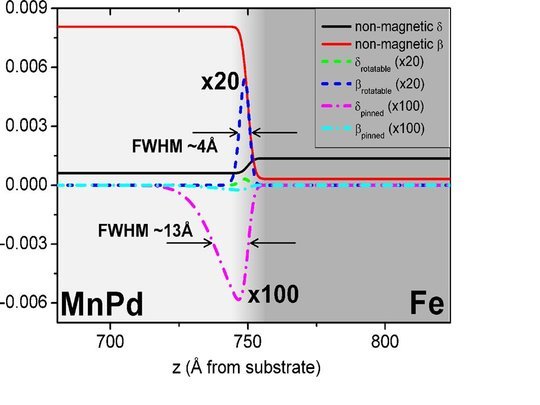X-ray resonant magnetic reflectivity (XRMR)
With the XRMR method we can obtain chemical and magnetic depth profiles, with element specific sensitivity. For this purpose we use our own “ERNSt” reflectometer. This allows the investigation of interface magnetism and interface related valence and roughness phenomena.
XRMR is based on conventional X-ray reflectivity. Here the reflectivity of the X-rays as a function of the angle of incidence (more precisely of the momentum transfer along the surface normal) is modulated by the interference of different partial beams, reflected at each interface present in layered systems. In the conventional reflectivity, the scattering provides information of the optical density profile, i.e. the thickness of the layers and the interface roughness. Utilizing XMCD transfers this reflectivity measurement into its resonant magnetic counterpart: X-ray resonant magnetic reflectivity (XRMR). In analogy this extracts the magnetic profile and magnetization variations at the interfaces. Therefore, we have developed a dedicated UHV system for XRMR investigations. This method requires intensive numerical reflectivity simulations. For this purpose a state of the art software package ReMagX has been developed, which is constantly improved. This software allows the investigation of complex magnetic layered systems.
We have investigated the induced magnetic profile in an antiferromagnet of a so called Exchange bias system. This phenomenon is not understood microscopically so far – even after 50 years of scientific work – but one of the key ingredients of every modern hard disc reading head. Figure 4 shows the XRMR derived magnetic profile of Mn (in MnPd) in contact with iron. We also could distinguish between the fraction of the rotatable and the pinned magnetic moment, which have shown unexpected strength and position dependencies.

